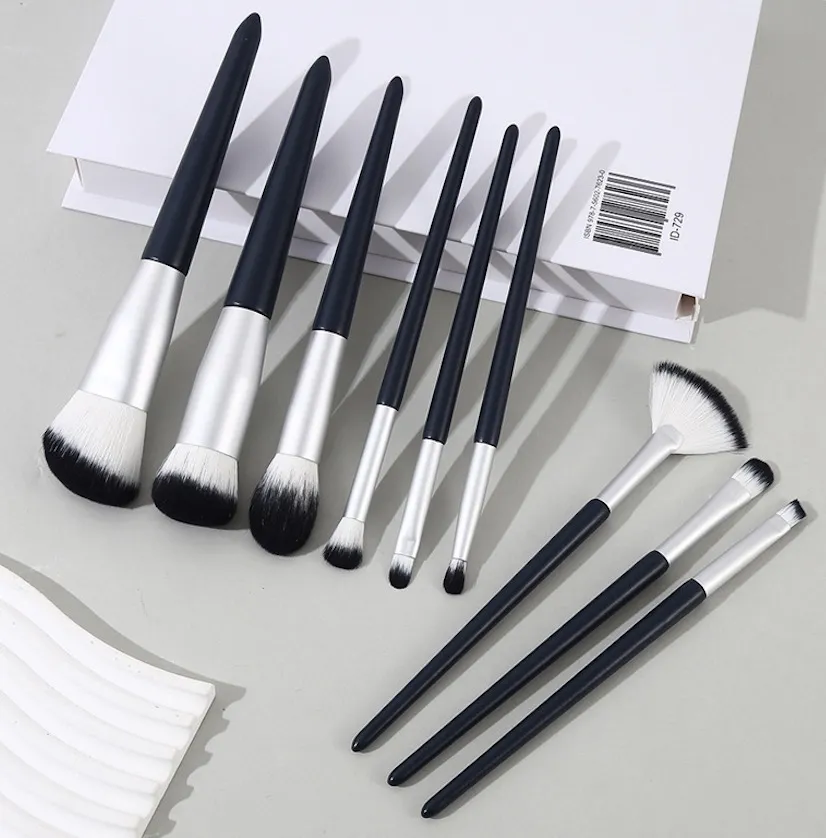Your customer’s favorite brush could be harming their skin. This can lead to complaints and damage your brand’s reputation. Understanding the science behind brush hygiene1 protects everyone.
Dirty makeup brushes often harbor bacteria like Staphylococcus2, Micrococcus, Bacillus, and Pseudomonas. Studies show washing brushes every 7–10 days, avoiding sharing, and drying them flat is the best way to reduce the risk of acne, rashes, and serious skin infections.
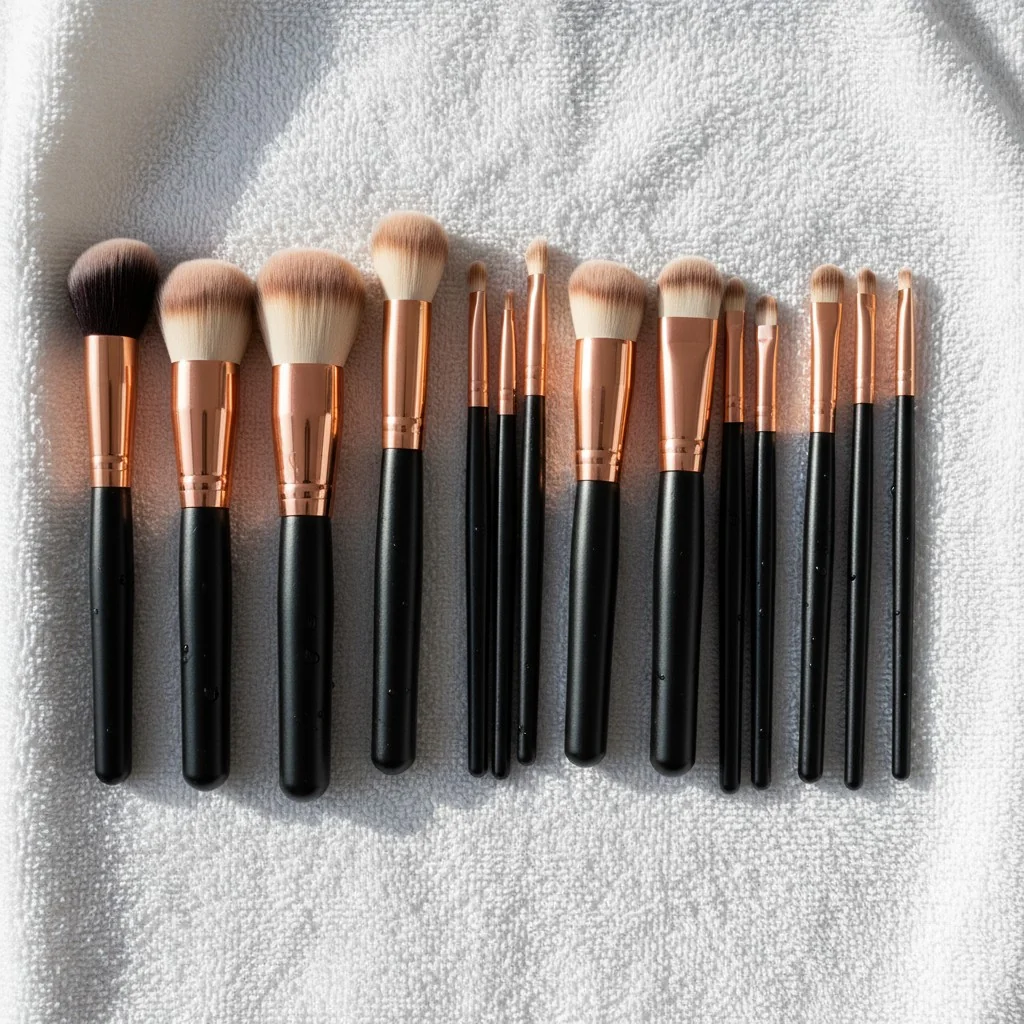
When I first started working on the factory floor, I was focused on brush density, softness, and handle balance. But I quickly learned that what you can’t see is just as important. The materials we choose and the guidance we give to customers directly impact the safety of the final product. A beautiful brush is only great if it’s also a safe one. For brand owners, this isn’t just a customer service issue; it’s a core part of your product’s quality and your brand’s promise. Let’s look at the data so you can make informed decisions for your business.
Used consumer makeup sponges can contain more than a million bacteria per milliliter.Vrai
Studies have measured contamination levels in used beauty blenders exceeding 10^6 CFU/ml, indicating a very high bacterial load.
All bacteria found on makeup brushes are just harmless skin flora.Faux
While some skin flora is present, pathogenic bacteria like S. aureus, E. coli, and Pseudomonas are frequently found, which can cause serious infections.
What Actually Grows on Makeup Brushes?
You assume your products are used cleanly. But in reality, they can become a hidden ecosystem for bacteria. Knowing the specific species helps you understand the real risk to your customers.
Brushes commonly grow Staphylococcus (including S. aureus), Micrococcus3, and Bacillus. Environmental bacteria like Pseudomonas also appear, especially with moisture. Studies show Gram-positive bacteria make up over 80% of the contamination, and shared salon kits are almost universally contaminated with pathogens.
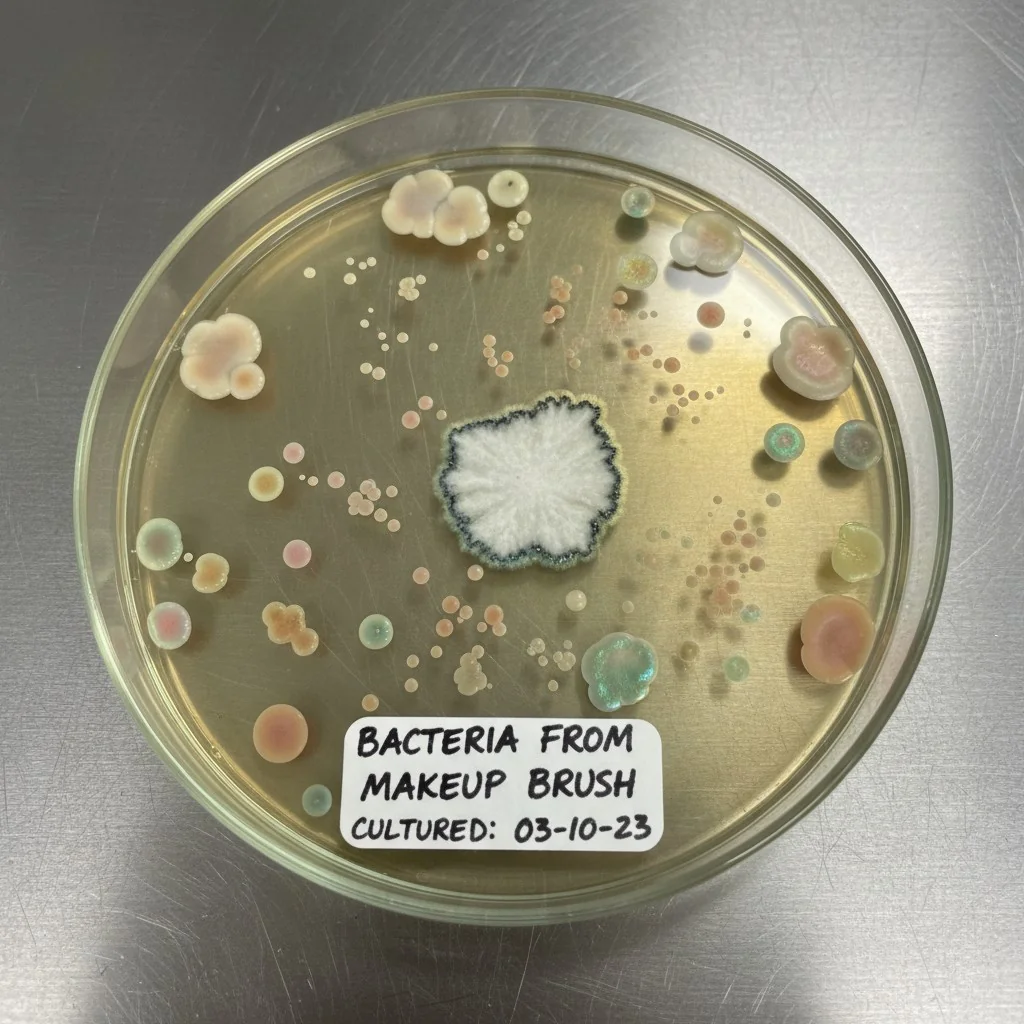
The data from lab analyses gives us a clear picture of what customers are dealing with. It’s not just a little dust and old makeup. We’re talking about a complex microbial environment that builds up over time. As a brand owner, understanding this helps you communicate the importance of hygiene to your audience.
The Usual Suspects: Common Bacterial Profiles
Most bacteria found on brushes are Gram-positive. This group includes species that are part of our normal skin flora but can cause problems if they overgrow or enter the skin through a small cut. A 2025 assessment gave us a detailed look at this.
| contamination4 Profile (2025 Study, n=57 brushes) | |
|---|---|
| Dominant Type | Gram-positives (81%) |
| Common Genera | Staphylococcus, Micrococcus, Bacillus5 |
| Also Found | Pseudomonas6 spp., Ralstonia |
Contamination Hotspots: From Personal to Professional Use
The risk gets much higher when tools are shared. Studies on salon kits found 100% bacterial contamination. They found everything from Staphylococcus to E. coli. Even personal beauty sponges are a major issue, with up to 90% of them being contaminated.
Shared makeup kits in salons have shown 100% bacterial contamination in studies.Vrai
Research on shared kits used in professional settings consistently finds near-universal contamination with a wide range of bacteria and fungi.
Only synthetic brushes can grow bacteria, while natural hair brushes are immune.Faux
Both natural and synthetic brushes can and do grow bacteria. The risk is determined by moisture, residue, and cleaning frequency, not just the bristle material.
How Often Should Your Customers Clean Their Brushes, and Why Does It Matter?
Many customers don’t clean their brushes often enough. This can lead to skin problems, bad reviews, and customer service complaints. Providing clear guidance protects them and your brand’s integrity.
Dermatologists recommend washing brushes every 7–10 days. This simple habit reduces the buildup of product, oil, and bacteria that can cause acne, rashes, and even serious infections from pathogens like Staph and E. coli.
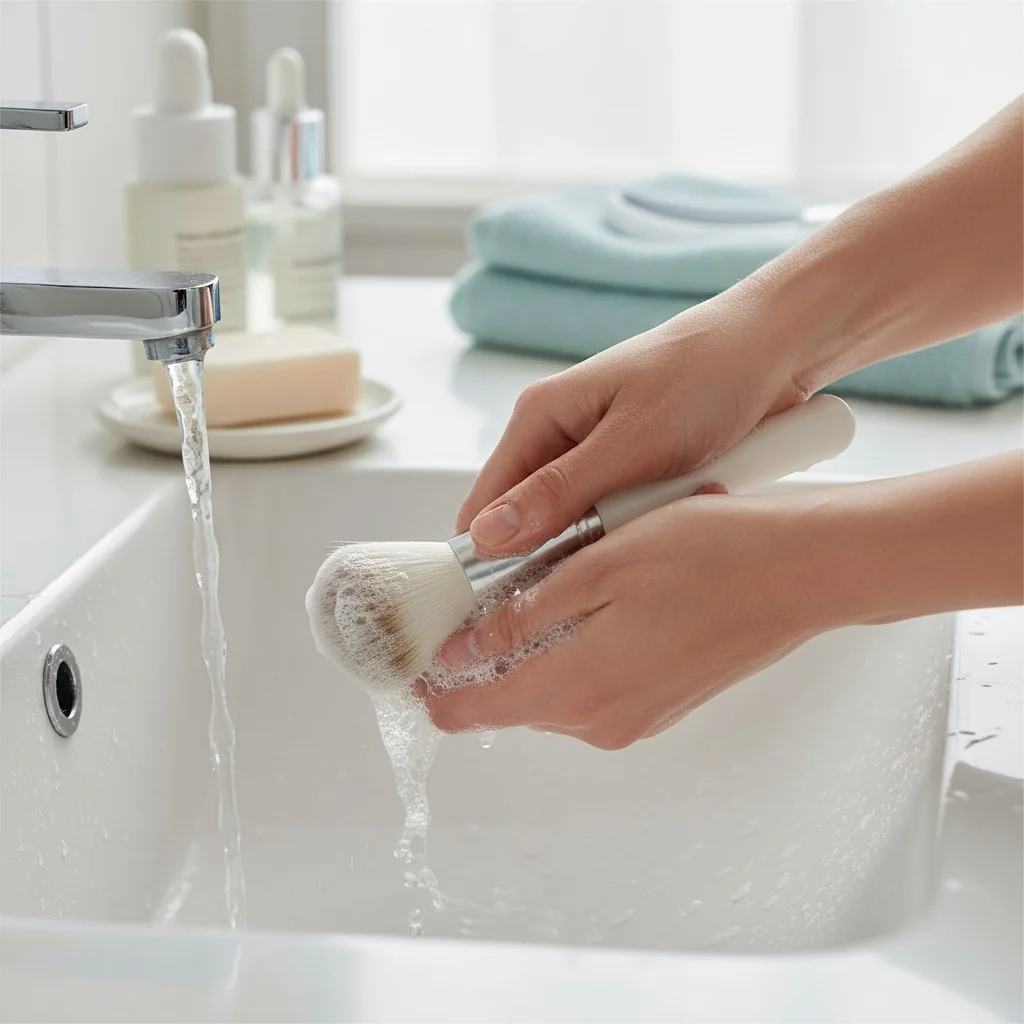
There’s a big difference between what experts recommend and what people actually do. This gap is both a risk and an opportunity for your brand. When you educate your customers on proper care, you’re not just selling a product; you’re providing a complete, high-quality experience. It shows you care about their results and their well-being long after the purchase.
The 7-10 Day Rule: A Dermatologist-Backed Standard
The 7-10 day cleaning schedule isn’t arbitrary. It’s based on how quickly bacteria can multiply in the presence of moisture, skin oils, and cosmetic residue. Weekly cleaning interrupts this cycle before the bacterial load becomes a significant risk. This is especially critical for foundation and concealer brushes that are used with liquid products and have more direct, repeated contact with the skin.
The Gap Between Advice and Reality
Surveys show that user habits are far from ideal. Many people see brush cleaning as a chore and don’t realize the risks.
| User Hygiene Behavior (Survey, n=370) | |
|---|---|
| cleaning frequency7 | |
| Rarely | 44.3% |
| Once a month | 29.7% |
| After each use | 8.6% |
| Reported Issues | |
| Suspected skin problems from tools | 27.8% |
This data tells me that nearly half of all customers are at a higher risk of skin issues simply because they don’t clean their tools. As a brand, you can address this directly on your packaging, website, and social media.
Nearly one-third of makeup users suspect their tools have caused skin problems.Vrai
In a survey of 370 users, 27.8% reported that they believed their makeup tools were linked to skin issues they experienced.
Cleaning brushes once a month is sufficient to prevent bacterial growth.Faux
Dermatologists recommend washing every 7-10 days. Waiting a month allows a significant buildup of bacteria, oils, and residue, increasing infection risk.
What Are the Biggest Hygiene Risk Factors for Makeup Brushes?
You might think a brush is just a simple tool. But how it’s used, stored, and even made can create huge hygiene risks. Understanding these drivers helps you design safer products and better packaging.
The biggest risk drivers are moisture, product residue, sharing, and poor storage. Damp brushes, especially sponges, are perfect breeding grounds for bacteria and fungi. Leftover makeup and oils act as food, while sharing tools and bathroom storage introduce new contaminants.
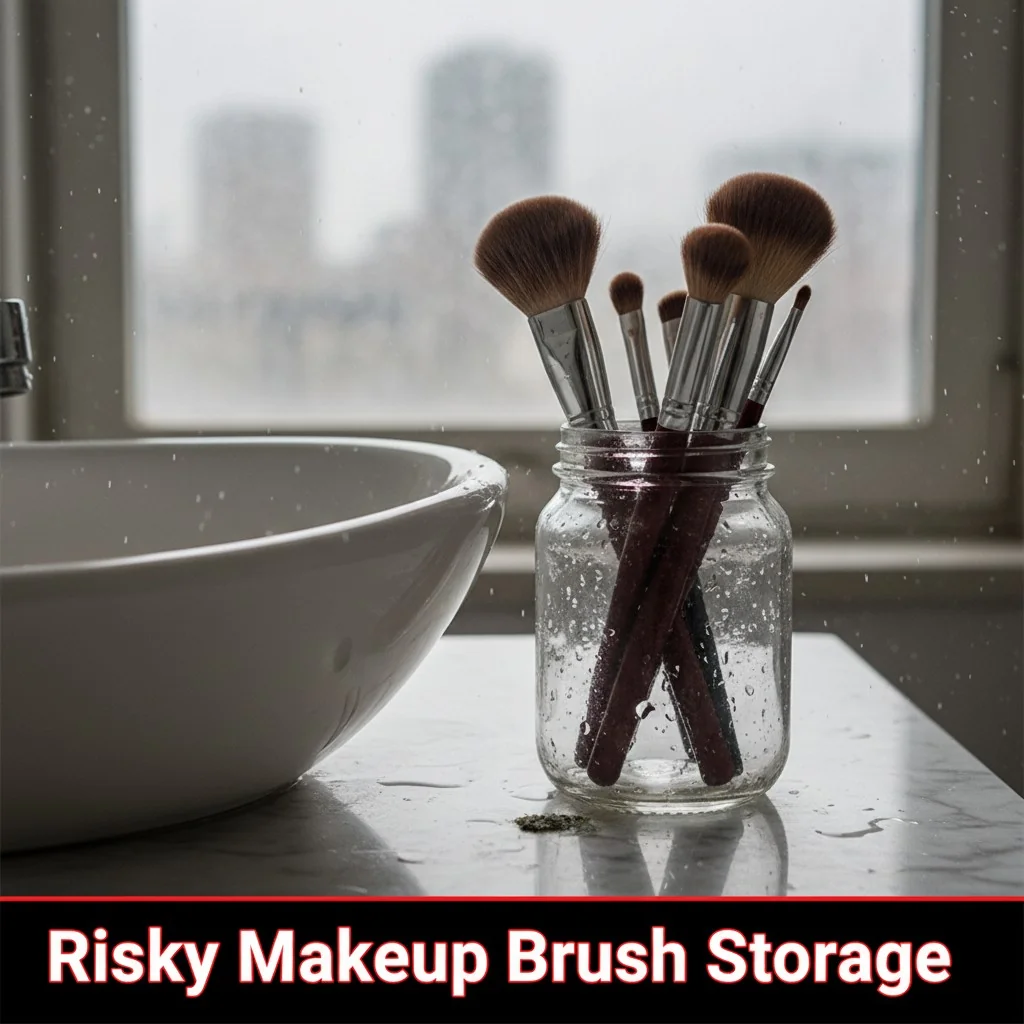
When developing a brush line, we have to think like a microbiologist. Where will moisture get trapped? What kind of residue will the formula leave behind? How can we guide the customer to store it safely? Answering these questions is key to reducing risk. From my experience, a brush’s design directly influences its long-term hygiene.
The Four Key Drivers of Contamination
Each risk factor creates a different kind of problem. A brand that understands this can build safety features into its products and marketing.
| Risk Driver | Key Contaminant Source | Associated Pathogens |
|---|---|---|
| Moisture | Damp sponges, upright drying | Pseudomonas spp., Fungi/Yeast |
| Residue | Oils & water in cosmetics | Staphylococcus, Bacillus |
| Sharing | Friends, family, salon kits | E. coli, Streptococcus |
| Storage | Humid bathrooms, dusty drawers | E. coli, Environmental molds |
For example, a dense kabuki brush will hold more moisture in its core than a fluffy powder brush. So, the drying instructions for that kabuki brush are much more critical. Likewise, a beauty sponge is the highest risk of all; studies found contamination levels over 1 million CFU/ml because they are so difficult to dry completely.
Storing brushes upright in a cup is the best way to maintain their shape and hygiene.Faux
Storing brushes upright traps water in the ferrule (the metal part), which can dissolve the glue, damage the brush, and create a breeding ground for bacteria and mold.
”BeautyFaux
”Studies
How Can Brands and OEMs Reduce Customer Hygiene Risks?
Customer complaints about breakouts can damage your brand. Ignoring hygiene is a liability waiting to happen. But proactive standards in design and education can turn this risk into a brand advantage.
Brands can reduce risk by including clear cleaning instructions, choosing quick-drying fibers, avoiding unprovable "sterile" claims, and performing microbial quality control8 tests. This approach builds customer trust, demonstrates quality, and lowers your brand’s liability.
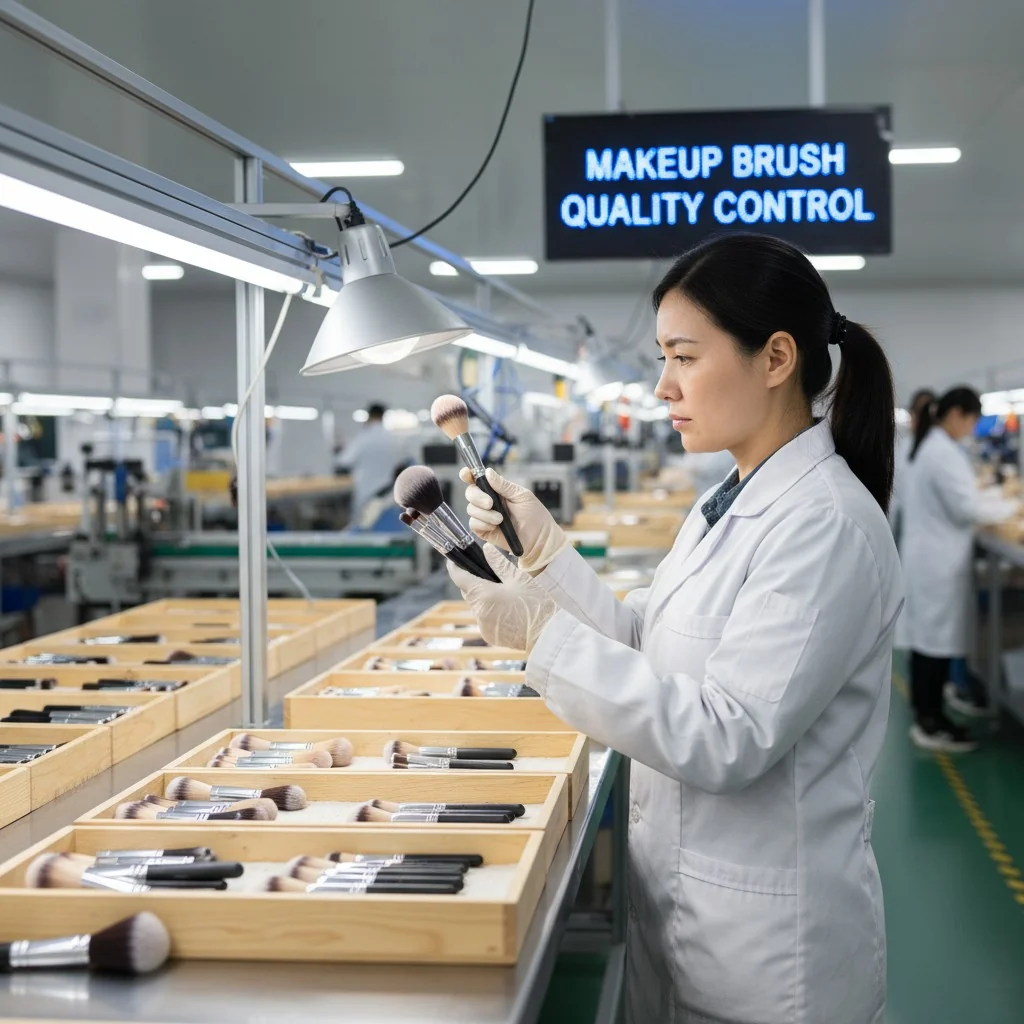
This is where my work at Brushino becomes so important for founders like you. We don’t just make brushes; we help you build a safe, reliable, and trustworthy product line. It starts with making smart choices long before the brush ever reaches the customer. We can guide you on everything from material selection to the right quality control protocols.
From Product Design to Customer Education
A comprehensive hygiene strategy involves four key areas.
- User Instructions: Provide a care card or packaging text that aligns with dermatologist advice. Instruct users to wash brushes weekly and lay them flat with the tips over an edge to air-dry. This protects the ferrule glue and ensures the head dries completely.
- Material Choices: Select synthetic fibers and brush densities that are known to dry faster. For sponges, consider packaging them with a ventilated stand to encourage proper drying.
- Packaging Claims: Be careful with your words. Instead of vague terms like "antimicrobial," which can be misleading, focus on tested performance. For example, you can cite that your brushes are produced in a facility that follows ISO standards for microbial limits.
- Testing and QC: This is non-negotiable. Your manufacturing process should include microbial assessments (TAMC/TYMC) to ensure brushes are clean off the production line. It’s also critical to screen for the specific pathogens that regulators focus on.
| Regulatory Risk Signal | |
|---|---|
| Source | FDA Cosmetics Recalls (2005–2025) |
| Pathogen of Concern | Pseudomonas spp. |
| Prevalence | Found in ~56% of microbial recalls |
| Implication for Brands | Your QC testing must screen for P. aeruginosa. |
Claiming a brush is 'antimicrobial' means it never needs to be cleaned.Faux
Antimicrobial treatments may inhibit some growth, but they do not make a tool sterile or self-cleaning. Regular washing is still essential to remove oils, dead skin, and bacteria.
Pseudomonas bacteria are implicated in over half of all microbial contamination-related FDA cosmetics recalls.Vrai
An analysis of FDA data from 2005-2025 shows that Pseudomonas species, particularly P. aeruginosa, were present in approximately 56% of microbiologically contaminated recalled products.
Conclusion
Understanding brush bacteria is smart business. Educating customers on proper hygiene and choosing the right materials and QC standards protects them, reduces complaints, and builds your brand’s reputation.
Références
-
Learning about hygiene practices can significantly improve skin health and reduce complaints. ↩
-
Understanding Staphylococcus is crucial for recognizing its potential risks in skincare and makeup. ↩
-
Exploring Micrococcus helps in understanding its presence on makeup tools and its implications for skin health. ↩
-
Exploring contamination helps in understanding the risks associated with unclean makeup tools. ↩
-
Learning about Bacillus can inform better hygiene practices for makeup brushes and skin safety. ↩
-
Pseudomonas is a significant concern in cosmetics; understanding it can help prevent skin infections. ↩
-
Understanding the recommended cleaning frequency is vital for preventing skin issues related to makeup tools. ↩
-
Understanding microbial quality control is crucial for ensuring the safety and effectiveness of cosmetic products. ↩


